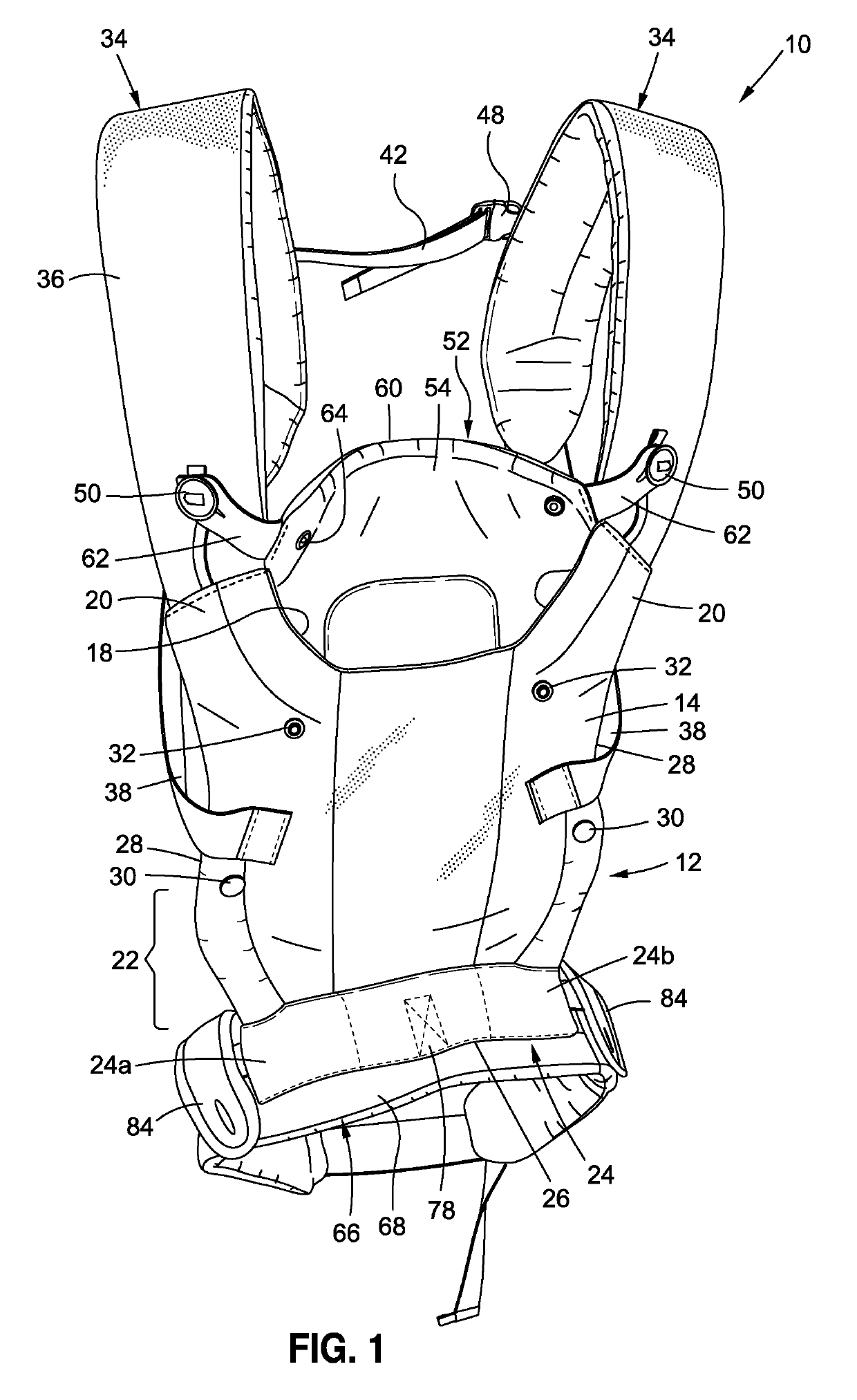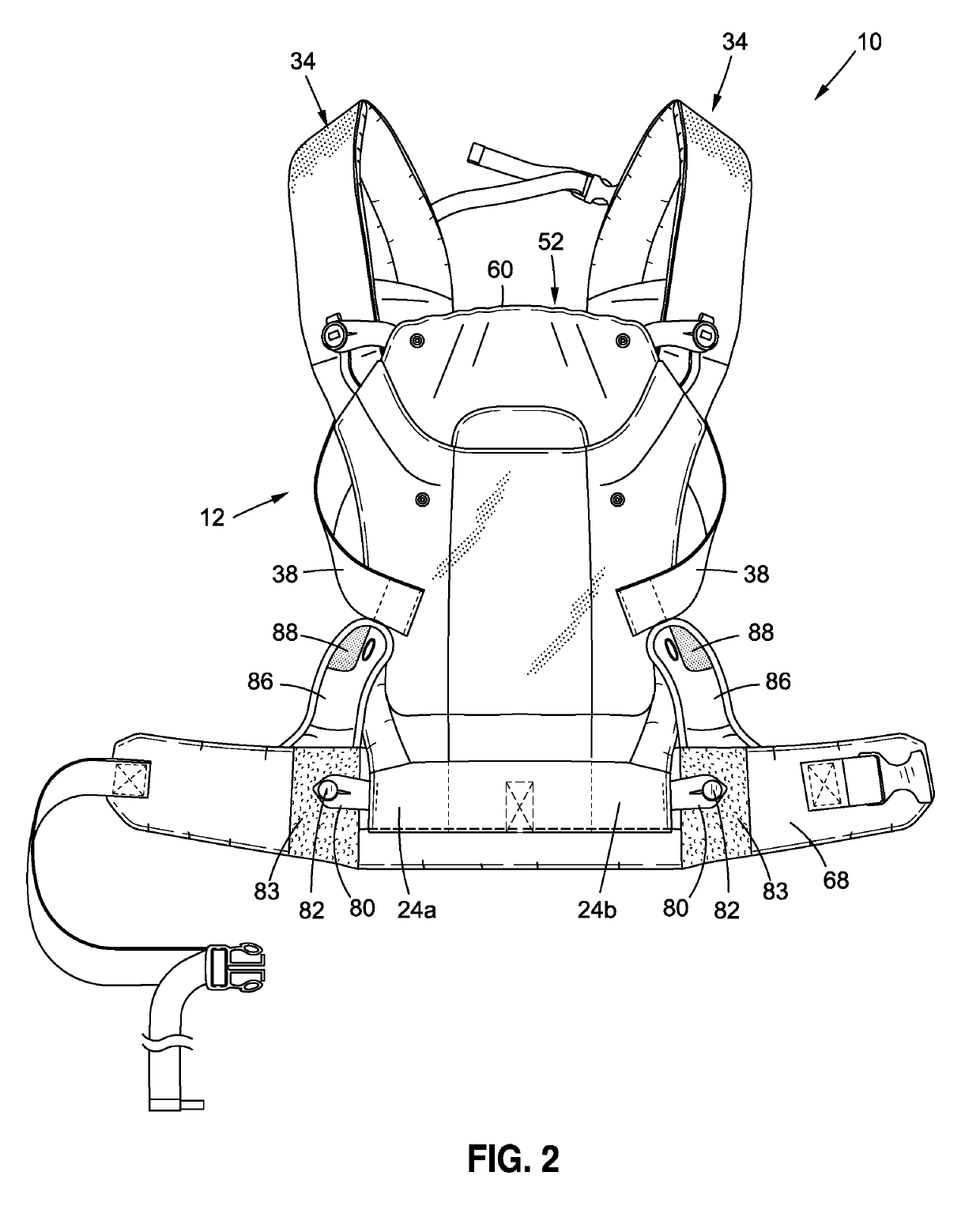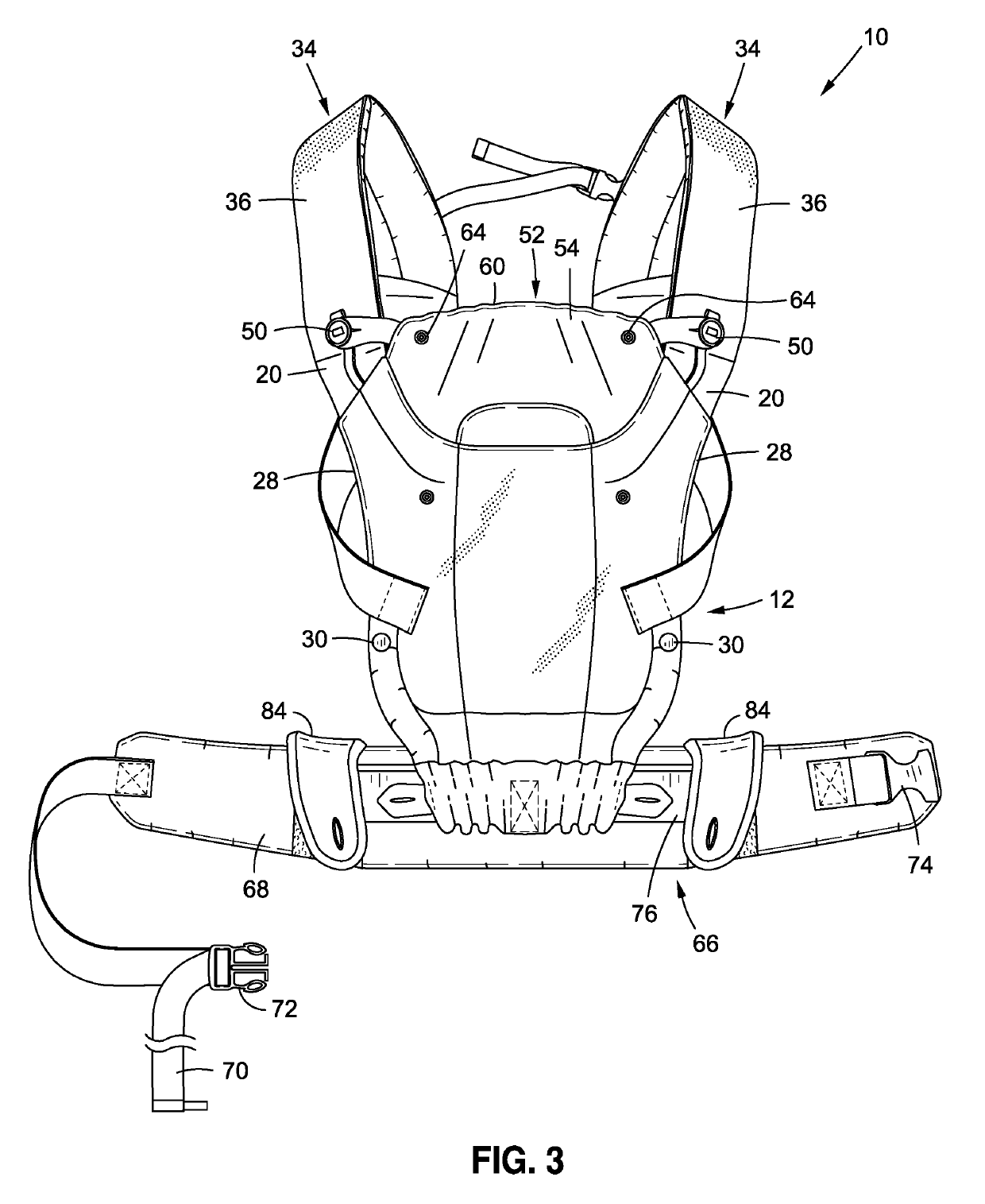Infant carrier with cinchable sleeve seat adjustment
a technology for infant carriers and seat covers, which is applied in the field of infant carriers, can solve the problems of reducing the height profile the inability to adjust the seat portion, and the inability to deploy the cumbersome and bulky stroller in places, so as to reduce the height profile, facilitate the manipulation of the main body panel into any particular height profile, and maximize the width of the seat portion
- Summary
- Abstract
- Description
- Claims
- Application Information
AI Technical Summary
Benefits of technology
Problems solved by technology
Method used
Image
Examples
Embodiment Construction
[0042]Referring now to the drawings, wherein the showings are for purposes of illustrating various embodiments of the present disclosure only, and are not for purposes of limiting the same, there is depicted an adjustable infant carrier 10 constructed in accordance with one embodiment the present disclosure. The infant carrier 10 is specifically configured and adapted to provide enhanced adjustability and ease-of-use relative to conventional infant carriers. More specifically, the infant carrier 10 is outfitted with a structural features described with particularity below which are adapted to allow for varying degrees of adjustability to the effective width of the seat portion of the carrier so as to accommodate children of differing size, as well as different support positions / configurations. The infant carrier 10 is additionally configured to be worn in both front and back carry configurations.
[0043]Referring now to the FIGS. 1-7, the carrier 10 comprises a main body panel 12 defi...
PUM
 Login to View More
Login to View More Abstract
Description
Claims
Application Information
 Login to View More
Login to View More - R&D
- Intellectual Property
- Life Sciences
- Materials
- Tech Scout
- Unparalleled Data Quality
- Higher Quality Content
- 60% Fewer Hallucinations
Browse by: Latest US Patents, China's latest patents, Technical Efficacy Thesaurus, Application Domain, Technology Topic, Popular Technical Reports.
© 2025 PatSnap. All rights reserved.Legal|Privacy policy|Modern Slavery Act Transparency Statement|Sitemap|About US| Contact US: help@patsnap.com



